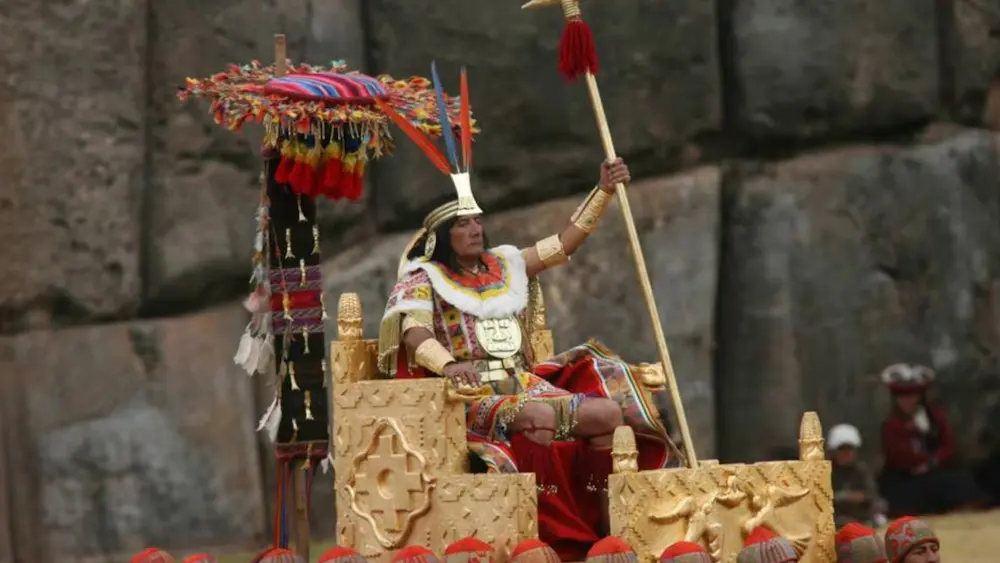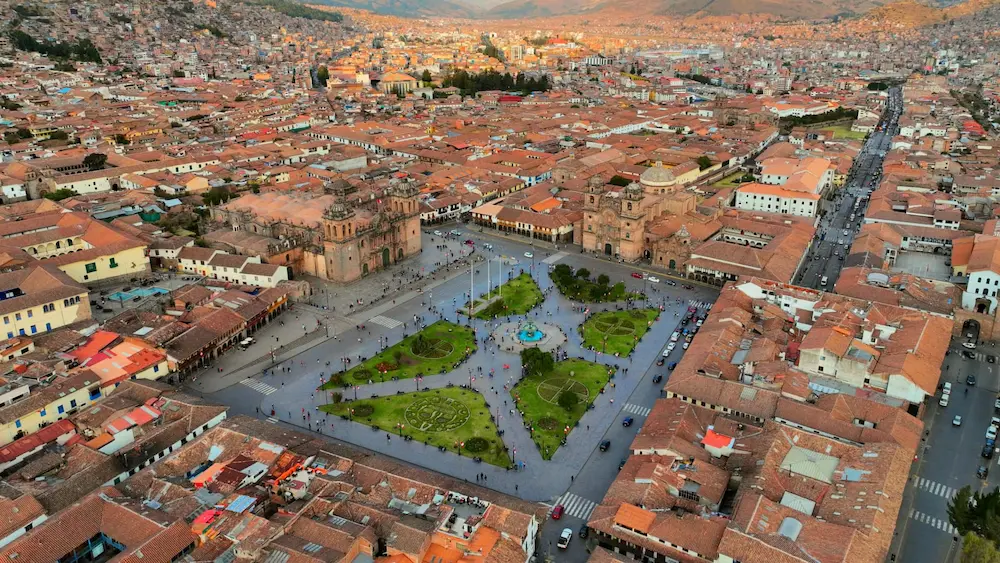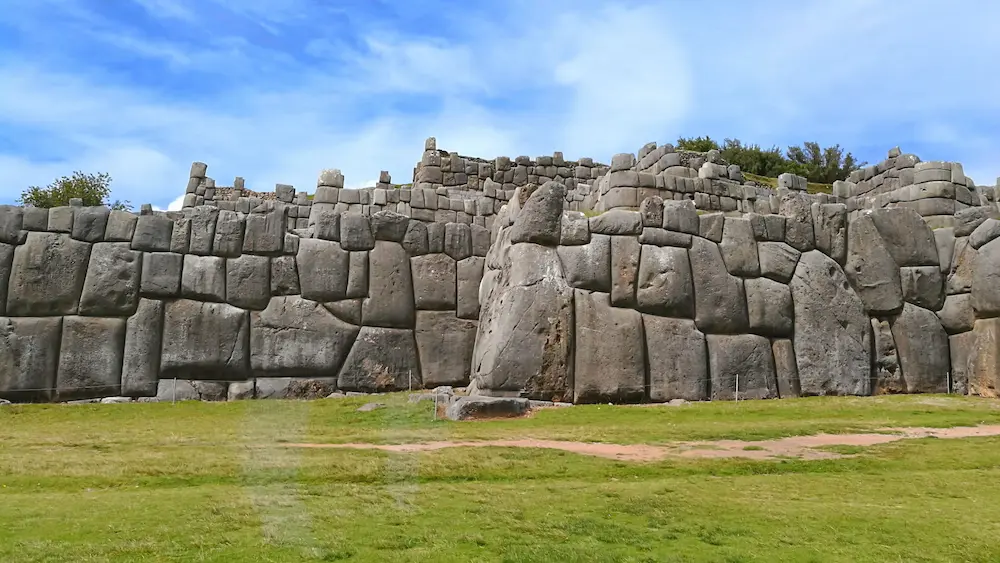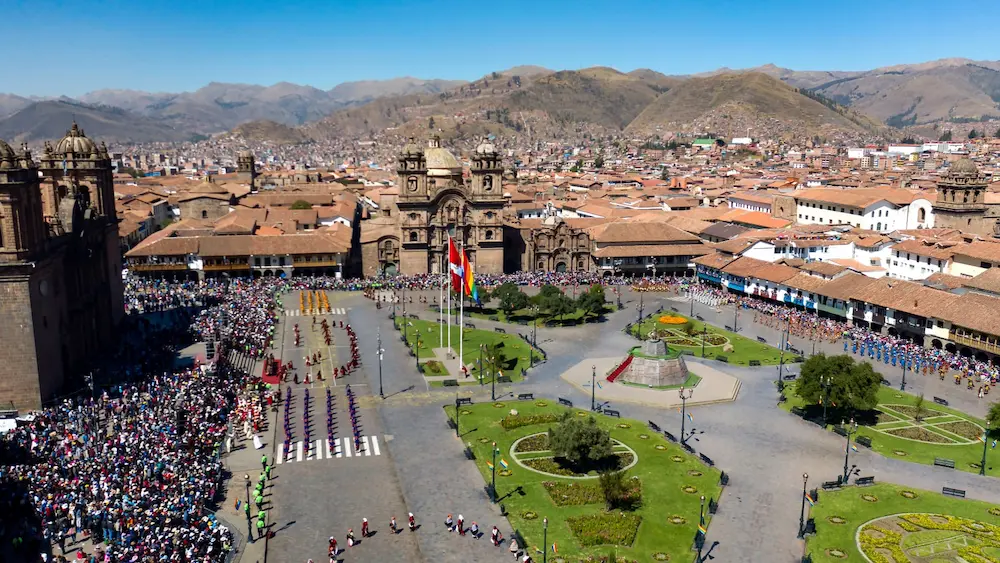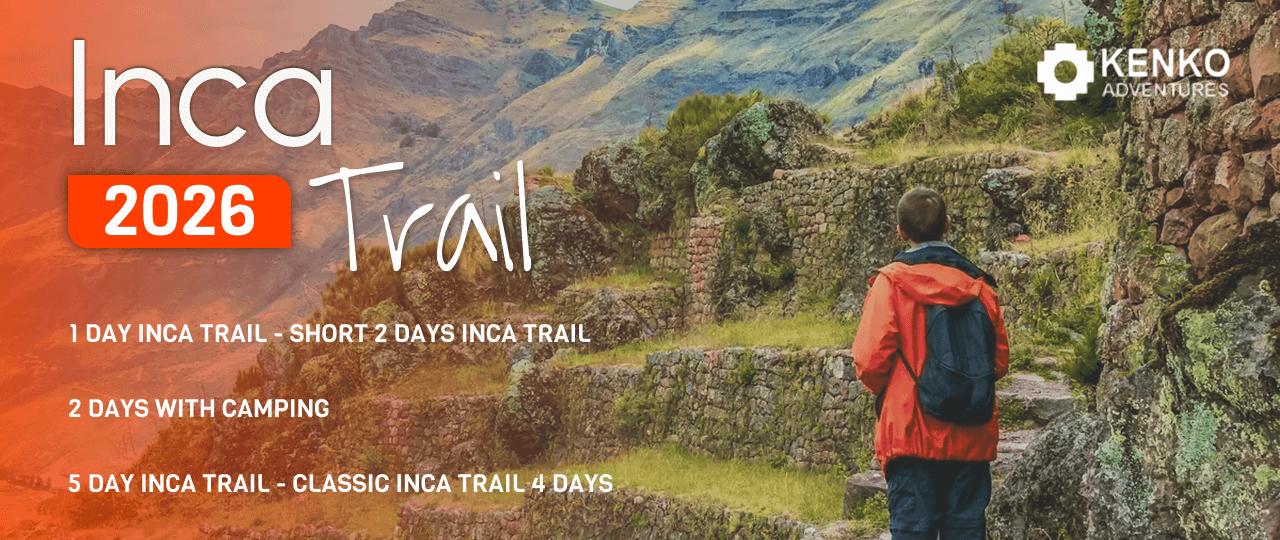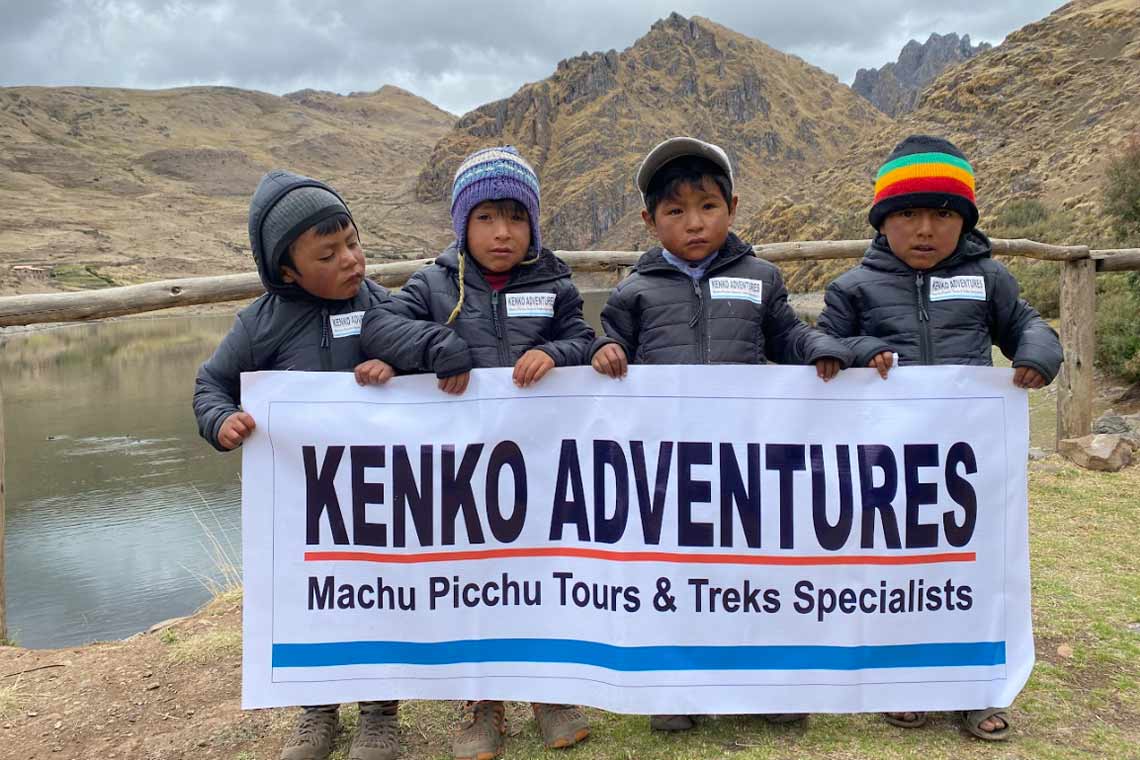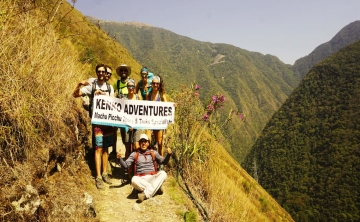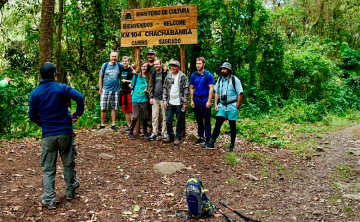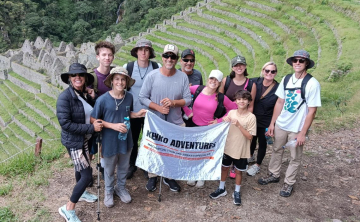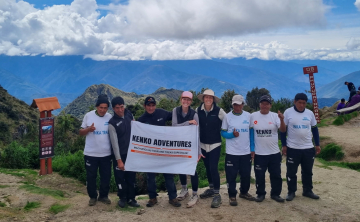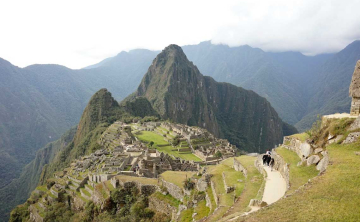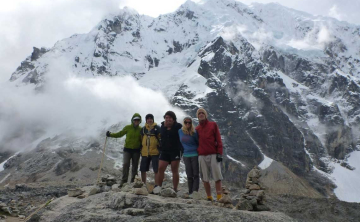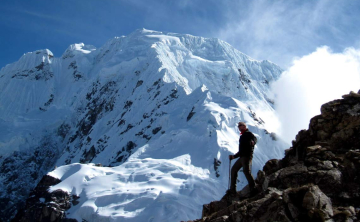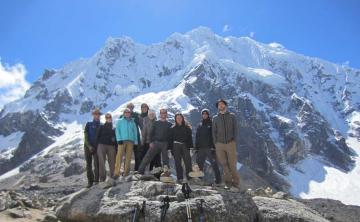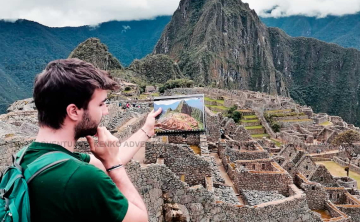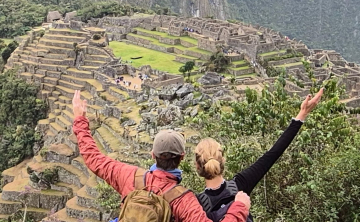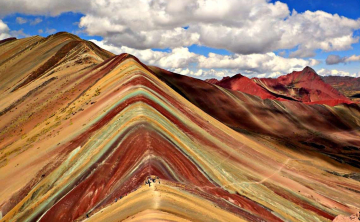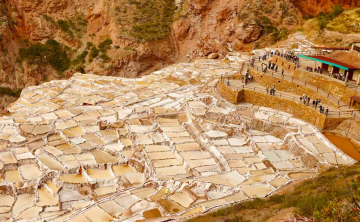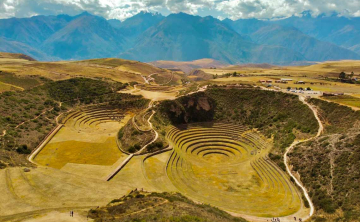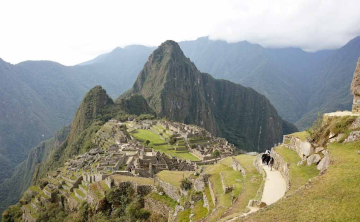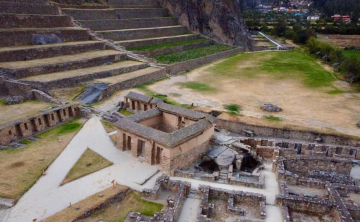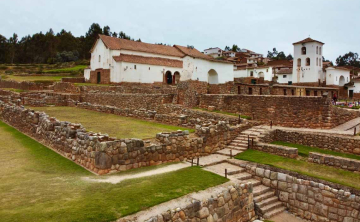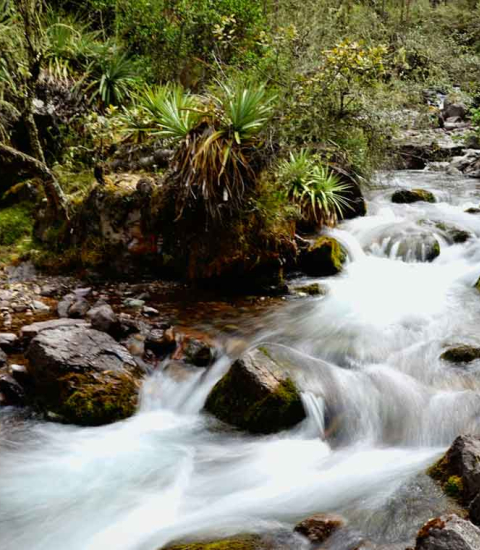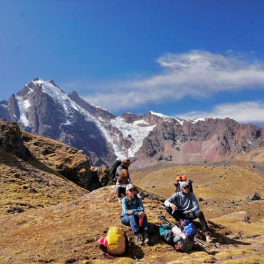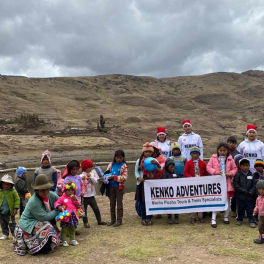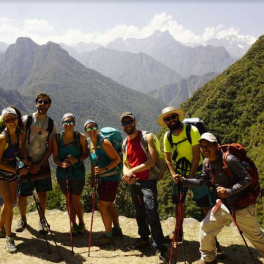Inti Raymi in Cusco: A Celebration of the Sun and Inca Heritage

We know that the heart of a great adventure in Peru not only lies in its amazing landscapes and ancient ruins but also in its vibrant living traditions. That's why we want to introduce you to Inti Raymi, the spectacular Festival of the Sun celebrated in Cusco, the ancient capital of the Inca Empire. Every June 24th, we invite you to be part of one of the most significant cultural celebrations of the Andes, an event that resonates with Inca history and our people's deep connection to nature. Exploring Cusco's rich heritage, whether through its festivals or its historic sites, is truly a highlight for any traveler, making the Cusco City Tour an essential experience.
A journey through time: The fascinating history of Inti Raymi
We are proud to share the rich history of Inti Raymi, a tradition that has endured through centuries.
The birth of an Inca Tradition
Inti Raymi in Cusco, or the Festival of the Sun, was established by Sapa Inca Pachacútec around 1430 to honor Inti, the Sun God, the most revered deity in Inca religion. Celebrated during the winter solstice, it marked the Inca New Year and symbolized the sunâs return, bringing life and warmth to the empire.
The festival was not only religious but also political, reinforcing the divine authority of the Sapa Inca, considered a descendant of Inti. Presiding over the ceremonies, he strengthened loyalty and unity among the empireâs diverse communities.
MarÃa Rostworowski highlights that Inti Raymi also served to integrate the various ethnic groups through shared rituals, promoting social cohesion. It connected spiritual, agricultural, and communal life, guiding planting cycles while uniting people under a common cultural identity.
Today, travelers can experience the legacy of this tradition through tours like Authentic Peru: The Lares Trek or Qenqo: The Perfect Combination of Adventure and Culture, often included in an extended Cusco City Tour. Inti Raymi remains a celebration of Inca heritage, cultural unity, and the enduring reverence for the Sun God.
From prohibition to revival
Sadly, the Festival of the Sun was prohibited in 1572 by Viceroy Francisco de Toledo, who considered it a pagan practice incompatible with Catholicism. Despite this suppression, our indigenous communities secretly maintained elements of Inti Raymi, preserving its essence through oral traditions. It was in 1944 when Faustino Espinoza Navarro, a Quechua writer and scholar, revived the festival as a theatrical representation, based on the chronicles of Inca Garcilaso de la Vega.
This reconstruction, celebrated at Sacsayhuamán, has transformed Inti Raymi into a world-renowned cultural event, declared Cultural Heritage of the Nation in 2001. This resilience is a core part of what we experience on any trekking in Peru, and a fascinating aspect you can delve into during your Cusco City Tour.
Rituals and traditions: The heart of the festival of the Sun
When we attend Inti Raymi festival, we witness a vibrant recreation of ancestral rituals.
The historical ceremonies
Historically, Inti Raymi was a nine-day celebration that began with a purification period, including fasting. On the main day, June 24th, the Sapa Inca led a procession from Qoricancha, the Temple of the Sun, to Haukaypata (the current Plaza de Armas in Cusco). There, offerings of chicha de jora, a fermented corn liquor, were made in honor of Inti. The rituals included llama sacrifices (simulated today), coca leaf readings, and traditional dances representing the empire's diversity. It is an echo of our ancestors' connection with the land and the cosmos, similar to how nature is appreciated on the Salkantay Trek 4 Days or during an Inca Trail Glamping experience, all while soaking in the atmosphere of the historic Cusco City Tour.
You might also want to check out: The mita system and mita obligations
The modern spectacle: Stages and representations
The festival unfolds across three main stages in Cusco, allowing visitors to witness the spiritual, communal, and theatrical essence of the celebration. Each stage offers a unique perspective on the ceremony, combining ritual, music, dance, and history to immerse spectators in the rich heritage of the Andes. Today, the modern Inti Raymi unfolds across three main stages in Cusco, offering you an immersive experience:
- Stage 1: Qoricancha
The first stage takes place at Qoricancha, also known as the Temple of the Sun, which was one of the most sacred sites of the Inca Empire. Here, the ceremony begins with offerings and rituals honoring Inti, the Sun God. Priests and attendants perform symbolic acts such as pouring chicha de jora (fermented corn beverage) and arranging ritual objects to recreate the adoration of the sun as it was observed centuries ago.
This stage lasts approximately 45 minutes and provides visitors with a deep understanding of Cuscoâs spiritual heart. Itâs a moment to witness the meticulous attention to Inca religious practices, from the arrangement of ceremonial platforms to the ceremonial attire, which reflects the hierarchy and cosmology of the Inca world. The rituals performed here highlight the Incasâ astronomical knowledge, their agricultural cycles, and their deep respect for natural forces, setting the tone for the rest of the festival.
By participating in or observing the Qoricancha ceremony, travelers not only witness a historical reenactment but also gain insight into the cultural continuity that has allowed Inti Raymi to survive and thrive in contemporary Cusco. Where visitors explore the surrounding historic architecture and learn about the cityâs transformation from the Inca capital to a modern cultural hub.
- Stage 2: Plaza de Armas
After the rituals at Qoricancha, the festival moves to Plaza de Armas, Cuscoâs central square. Here, a public procession unfolds for about one hour, featuring traditional dances and music. Performers wear colorful costumes representing the Inca hierarchy, while musicians play pututus, drums, and flutes, creating a lively and immersive atmosphere.
This stage highlights the communal aspect of Inti Raymi, allowing locals and visitors to experience the vibrancy of Andean culture and the enduring pride of Cusqueños. Itâs a perfect opportunity to see the festivalâs social and cultural significance up close, making it a must on any Cusco City Tour.
- Stage 3: Sacsayhuamán
The final stage takes place at Sacsayhuamán, the ancient Inca fortress overlooking Cusco. This is the main theatrical representation, lasting around two hours. Over 800 actors, including the Sapa Inca, priests, and dancers, recreate ancestral rituals, showcasing the empireâs hierarchy and traditions.
Costumes are elaborate, music is played with traditional instruments, and dances like qoyacha and huayno bring the ceremony to life. Though animal sacrifices are now symbolic, the spirit of the original festival is preserved, offering visitors a deep cultural and historical experience at the heart of Inti Raymi.
The modern celebration, though theatrical, seeks to capture the essence of the original festival, with actors wearing elaborate costumes adorned with gold and silver, representing the Inca hierarchy. The dances, such as qoyacha and huayno, and the music played with traditional instruments like pututus (conch shells) and drums, evoke the splendor of Tahuantinsuyo. Although animal sacrifices are no longer performed, symbolic offerings are simulated to maintain the connection with ancestral practices. It's a rich cultural experience, much like discovering.
You might also want to check out: A guide to hiking to the Sun Gate (Inti Punku)
Beyond the celebration: The deep cultural and political significance
Inti Raymi was never just a religious festival; it was a central pillar of Inca social and political life, intricately linked to the organization and governance of the empire. According to Garcilaso de la Vega, the festival served three fundamental purposes: expressing gratitude to Inti, the sun god, for the yearâs harvest; honoring the memory of the first Incas, Manco Cápac and Mama Ocllo, believed to be direct descendants of the sun; and celebrating the unity and cohesion of the Inca people. These objectives illustrate how Inti Raymi functioned as a ritual of power, reinforcing loyalty to the Sapa Inca while connecting the population to a shared cosmology and cultural identity.
MarÃa Rostworowski highlights that the festival also had a practical socio-economic function: it facilitated the redistribution of resources, strengthened reciprocal relationships through the Ayni system, and maintained social cohesion among diverse ethnic groups within the empire. This system of mutual obligations helped sustain the Inca economy, ensured community survival, and reinforced the interconnectedness of society and state.
John H. Rowe adds that the Incasâ advanced astronomical knowledge played a critical role in Inti Raymi. The precise timing of the winter solstice ensured that agricultural cycles and religious rituals were perfectly synchronized, reflecting the Inca understanding of the cosmos and its direct influence on daily life and the prosperity of the empire.
In contemporary times, Inti Raymi has become a symbol of cultural resilience and indigenous pride. Its revival in 1944 by Faustino Espinoza Navarro marked an intentional effort to reclaim Inca identity and preserve ancestral traditions despite centuries of colonial suppression. Sabine MacCormack emphasizes that the modern festival is not just a reenactment, but a living expression of heritage, adapting ancient rituals to present-day contexts while educating visitors about the spiritual, political, and social complexity of the Inca civilization.
For travelers, this means that attending Inti Raymi is more than witnessing a spectacle: it is a deep immersion into Peruvian history and Andean culture, a chance to connect with the enduring legacy of the Incas, and an opportunity to appreciate how ritual, governance, and community intertwined to create one of the most sophisticated civilizations in the Americas. Pairing the festival with experiences like the Short Inca Trail or cultural tours in Cusco amplifies this understanding, allowing visitors to experience both adventure and historical insight in a single journey.
You might also want to check out: The Inca Culture History
Historiographical perspectives: Understanding the chronicles of Inti Raymi
To fully appreciate Inti Raymi in Cusco, it is essential to understand how knowledge of this festival has been transmitted across centuries. The primary historical source comes from the chronicles of Inca Garcilaso de la Vega, written in the early 17th century. As the son of a Spanish conquistador and an Inca noblewoman, Garcilaso occupied a unique position at the crossroads of two worlds. His writings provide detailed accounts of Inca rituals, ceremonies, and social structures, offering invaluable insight into the festivalâs original form. However, historians caution that Garcilasoâs accounts often reflect an idealized vision of the Inca past, shaped by his desire to honor his maternal heritage while appealing to Spanish audiences.
To balance this perspective, scholars such as MarÃa Rostworowski and John H. Rowe have meticulously analyzed additional sources. They include the chronicles of Pedro Cieza de León, whose observations provide vivid, practical details of Inca life, and MartÃn de Murúa, whose accounts add ethnographic depth. By comparing these sources, historians can reconstruct Inti Raymi with greater accuracy, revealing the festivalâs religious, political, and social dimensions, as well as its evolution through time.
This historiographical richness allows travelers to engage with Inti Raymi beyond the spectacle, exploring the layers of meaning embedded in every ritual and procession. Understanding these historical nuances enhances the appreciation of Cusco as a living city where past and present converge, offering a deeper connection to the Inca civilization and its enduring legacy. Whether you are following the footsteps of Pachacútec, the visionary Sapa Inca, or tracing the rhythms of ancient ceremonies, this perspective adds context, depth, and authenticity to your Cusco experience.
Inti Raymi today: A living symbol and a global event
Today, Inti Raymi is the second largest festival in South America, attracting thousands of tourists from Peru and abroad each year. The celebration begins at Qoricancha, continues with a procession through Plaza de Armas, and culminates at Sacsayhuamán, where over 800 actors bring the ancient festival to life in a colorful spectacle of music, dance, and traditional rituals.
More than a performance, Inti Raymi is a living symbol of cultural pride and Inca heritage, connecting visitors with the history, spirituality, and resilience of the Andean people. Itâs an unforgettable experience that blends tradition, theater, and the vibrant energy of Cusco.
The modern Inti Raymi in Cusco also has a significant economic impact, boosting tourism in Cusco and the local economy. Furthermore, it reinforces the cultural identity of the cusqueños, who see the festival as an opportunity to reconnect with their Inca heritage. The date of June 24th, adjusted in the 20th century to coincide with Indigenous Peoples' Day and the Catholic feast of Saint John, reflects the continuous fusion of indigenous and colonial traditions. It's a vibrant example of how Peruvian culture adapts and flourishes, similar to how we continue exploring new routes like the Lares Trek 3 Days, the Rainbow Mountain 1 Day, or finding the Many Ways to Reach Machu Picchu. We also ensure our clients are well-prepared, offering insights on Altitude sickness: Tips and Prevention for a smoother journey.
Join Us: Experience the Magic of Inti Raymi in Cusco
We invite you to join Kenko Adventures in Cusco on June 24, 2025, to experience Inti Raymi, an unforgettable celebration that not only honors the sun god but also celebrates the resilience and vitality of our culture. Walk through the historic streets of Cusco, witness the majesty of the procession in the Plaza de Armas, and experience the theatrical climax at Sacsayhuamán. This festival is a unique opportunity to immerse yourself in the living history of Tahuantinsuyo and understand the depth of our Andean heritage.
Inti Raymi with experts, a minucious podcast
For those eager to dive deeper, âInti Raymi with Expertsâ is a meticulous podcast that unpacks the festivalâs rich history, rituals, and cultural significance. Guided by historians, anthropologists, and local elders, each episode explores the origins of the Festival of the Sun, the symbolism behind its ceremonies, and how it has evolved from a sacred Inca ritual into a modern celebration of indigenous pride. Listeners gain insider perspectives on the meaning of each dance, offering, and procession, making it an essential companion for anyone looking to understand Inti Raymi beyond what meets the eye.

